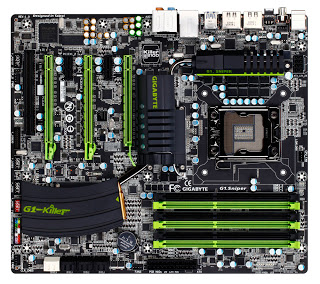Linux operating systems
 Linux is not an operating system, but just its kernel. Everything that you are accustomed to see and understand as an OS (buttons, windows and panels) – in fact, it is not. What you see is the GUI (Graphical user interface), that is, the graphical user interface, also called the graphical environment or graphical shell. GUI is a program designed to simplify the life of the user so that he does not suffer from the console. In fact, any OS looks like a console, that is, like the good old DOS.
Linux is not an operating system, but just its kernel. Everything that you are accustomed to see and understand as an OS (buttons, windows and panels) – in fact, it is not. What you see is the GUI (Graphical user interface), that is, the graphical user interface, also called the graphical environment or graphical shell. GUI is a program designed to simplify the life of the user so that he does not suffer from the console. In fact, any OS looks like a console, that is, like the good old DOS.
The types of operating systems built on the Linux kernel vary widely both in providing a working environment and in the set of applications available in the OS. This is partly because some programs support only some GUIs or depend on other programs that are not in the system. A quick overview of the differences and features of the variegated world of Linux is in this article.
So, any Linux starts from the console. DOS is an acronym for everyone more familiar. And the appearance of DOS is not yet forgotten by everyone.
Dos
Not too comfortable working, right? Everything else needs to know a bunch of commands, and not just remember where to place the cursor and which of the two mouse buttons to click. Therefore, for the mass user, the aforementioned GUIs were developed.
Linux graphical shells
With windows, everything is clear – one developer, one graphical environment. Its quality depends on the abilities and efforts of Microsoft programmers. Linux is an open and free system, so anyone can write any program and graphical shell as well. Its popularity will depend on how users like it in terms of beauty, stability, convenience … Free competition, so to speak.
Therefore, there are several graphical shells on Linux. The most widely used are the GNOME and KDE GUI programs, but they are quite demanding on system resources. Of course, there are lighter analogues, such as X’s (Xorg, Xvesa) or Openbox. If it comes to a user program, then along with the shell (GUI), the term Front-end (user interface or data input interface) is used. As you can see, the choice is quite large.
Linux Distribution Classification
If we take into account the above, it is easy to guess that there are a great many distributions. Some appear, others disappear. Anyone can collect the distribution and this process is not controlled by anyone. On the one hand it’s good, on the other hand it’s a complete mess. True, Linus Torvalds still controls the development of the kernel and has a decisive vote in making changes to its official branch.
The choice of distribution is an individual matter and can be said to be difficult. By and large, all distributions can be divided into two large categories: ordinary and mini. The main criterion for their determination is resource intensity and size.
Each of the two groups, in turn, can be divided into parent subgroups. The fact is that in the world of Linux distributions there are long-lived people and many builders use them as the basis of their builds. Naturally, child distributions inherit the main features of parent distributions. Parent List:
DebianDebian Go to the website
The most stable distribution. The community takes development and stability very responsibly, I would even say meticulously. Each release is tested in the most thorough manner. Therefore, releases come out infrequently, and the programs included in its composition are far from the latest versions.
SlackWareSlackware Go To Website
The oldest of the centenarians. The following statement is attributed to the community of this distribution: If you know Slackware, you know GNU / Linux. If you know Red Hat, then all you know is Red Hat. An impressive age determines the rich experience gained by the community with all that it implies …
RedHatRedHat Go To Website
A successful commercial project, incorporating the commercial distribution of Red Hat Enterprise and free – Fedora. As a result of such success, the wide distribution and popularization of this family of distributions and, accordingly, a very large community of users.
Gentoo LinuxGentoo Go To Website
A distribution built from source. It requires a certain level of knowledge from the user, however, when assembling from source codes, it is most compatible with the specific machine on which and for which the assembly and compilation of OS and software components takes place. As a result, productivity gains of up to 80% compared to other distributions.
This applies to parent distributions. You can learn more about child distributions in the Linux distribution article on Wikipedia.
Linux mini-distributions and Live-CD
Separately, I would like to mention one special, it seems to me, group of distributions – Puppy Linux. Puppy can also be called parental, since it is based not on one of the long-livers mentioned above, but rather interesting ideas (with the permission of the reader, I will not delve into the technical nuances).




